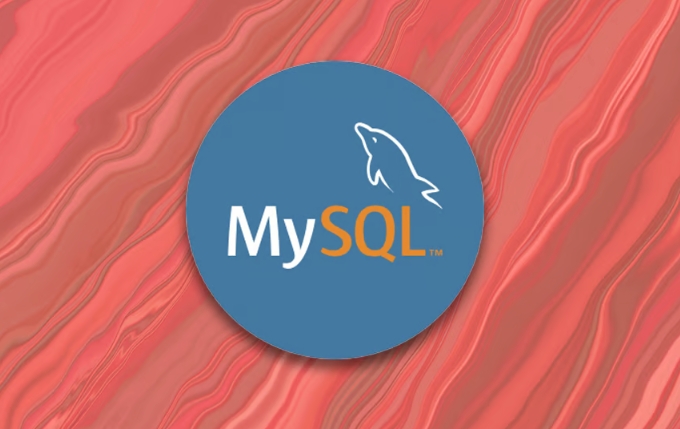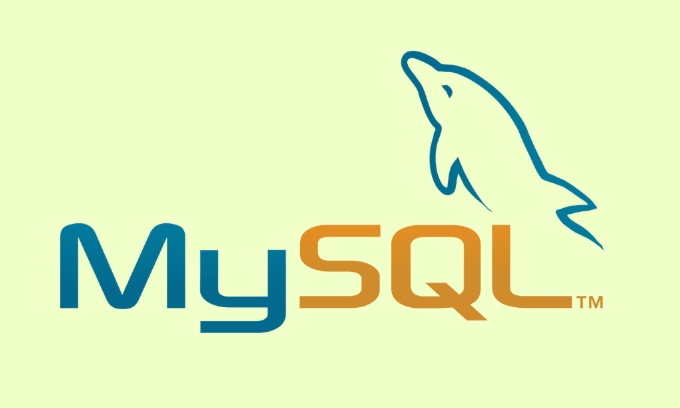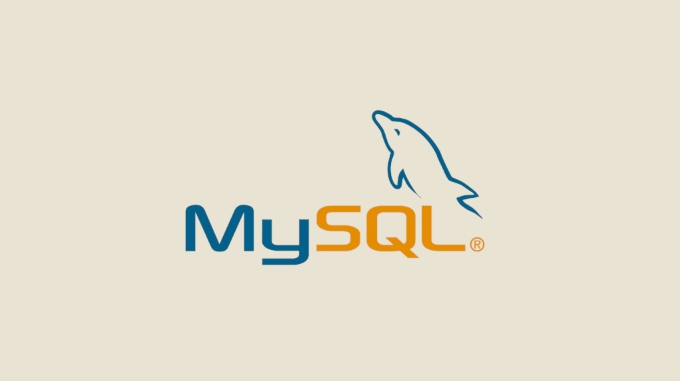Upgrading MySQL 5.7 to 8.0 Key points on Windows include: 1. Back up the database and configuration files, use mysqldump to export all databases and copy the data folder; 2. Download and install the MySQL 8.0 MSI package, select the upgrade option or manually replace the ZIP installation file; 3. Update the character set and authentication plug-in settings in the configuration file; 4. Run mysql_upgrade to check and repair the system table; 5. Check the log when encountering problems, force the old authentication method or re-register the service. The entire process needs to be handled with caution to ensure a smooth upgrade.

Let me talk about the key points directly: Upgrading MySQL 5.7 to 8.0 is not complicated on Windows, but there are several key points that need to be paid attention to, such as backup data, configuration compatibility, service update methods, etc. As long as you follow the steps, there will be basically no problems.

1. Back up existing databases and configuration files
Before making any changes, back up your database and configuration files , which is the safest way to do it.

- Export all databases using
mysqldump:mysqldump -u root -p --all-databases > backup.sql
- Backup
my.iniormy.cnffiles (usually in the installation directory or Windows system directory) at the same time, because the new version may be incompatible with the old configuration.
It is recommended to copy the entire MySQL data directory, especially the data folder, to prevent irreversible errors during the upgrade process.
2. Download and install MySQL 8.0
Go to the official website to download the MySQL 8.0 installation package suitable for Windows. It is recommended to use the MSI installer, which will guide you through most of the operations.

- Select the "Upgrade MySQL Server" option during installation, and the installation wizard will automatically detect existing 5.7 instances.
- If it is not automatically recognized, you can manually select the existing configuration file path to ensure that the new version can inherit the original settings.
Note: If you manually decompress MySQL installed with ZIP version, you need to stop the service yourself, replace the executable file, and retain the original data directory.
3. Check and update the configuration file
MySQL 8.0 has some tweaks to the configuration items, especially changes to the default character set and authentication plug-in:
- The default character set is changed from
latin1utf8mb4. If you usedutf8, remember to change itutf8mb4and set the sorting rules:character-set-server=utf8mb4 collation-server=utf8mb4_unicode_ci
- The authentication plug-in is changed
caching_sha2_password, and old clients may not support it. If you encounter connection problems, you can add a sentence to the configuration:default_authentication_plugin=mysql_native_password
These modifications must be completed before restarting the service after installation is completed.
4. After the upgrade is completed, run mysql_upgrade
This step is very critical and cannot be skipped.
- Open the command line, enter the
bindirectory of MySQL 8.0, and execute:mysql_upgrade -u root -p
- This command will check and repair the system tables, update the permission structure, and ensure that the new version can run normally.
If an error is reported in the middle, you should check it one by one according to the prompts. The common may be insufficient permissions or configuration conflicts.
5. Frequently Asked Questions and Solutions
- Startup failed : Check the logs in the event viewer, or run
mysqld --consoleto view the console output. - Can't connect to the database : Try to force the old authentication method with
mysql -u root -p --default-auth=mysql_native_password. - Service cannot be registered/uninstalled : You can use
mysqld --removeandmysqld --installto re-register the service.
Basically that's it. Although the whole process is a bit cumbersome, every step is clear and controllable. The key is not to rush to skip key steps such as mysql_upgrade and configuration checking. Make backups and take your time. You can usually upgrade to MySQL 8.0 smoothly.
The above is the detailed content of how to upgrade mysql 5.7 to 8.0 on windows. For more information, please follow other related articles on the PHP Chinese website!

Hot AI Tools

Undress AI Tool
Undress images for free

Undresser.AI Undress
AI-powered app for creating realistic nude photos

AI Clothes Remover
Online AI tool for removing clothes from photos.

Clothoff.io
AI clothes remover

Video Face Swap
Swap faces in any video effortlessly with our completely free AI face swap tool!

Hot Article

Hot Tools

Notepad++7.3.1
Easy-to-use and free code editor

SublimeText3 Chinese version
Chinese version, very easy to use

Zend Studio 13.0.1
Powerful PHP integrated development environment

Dreamweaver CS6
Visual web development tools

SublimeText3 Mac version
God-level code editing software (SublimeText3)

Hot Topics
 What is GTID (Global Transaction Identifier) and what are its advantages?
Jun 19, 2025 am 01:03 AM
What is GTID (Global Transaction Identifier) and what are its advantages?
Jun 19, 2025 am 01:03 AM
GTID (Global Transaction Identifier) ??solves the complexity of replication and failover in MySQL databases by assigning a unique identity to each transaction. 1. It simplifies replication management, automatically handles log files and locations, allowing slave servers to request transactions based on the last executed GTID. 2. Ensure consistency across servers, ensure that each transaction is applied only once on each server, and avoid data inconsistency. 3. Improve troubleshooting efficiency. GTID includes server UUID and serial number, which is convenient for tracking transaction flow and accurately locate problems. These three core advantages make MySQL replication more robust and easy to manage, significantly improving system reliability and data integrity.
 What is a typical process for MySQL master failover?
Jun 19, 2025 am 01:06 AM
What is a typical process for MySQL master failover?
Jun 19, 2025 am 01:06 AM
MySQL main library failover mainly includes four steps. 1. Fault detection: Regularly check the main library process, connection status and simple query to determine whether it is downtime, set up a retry mechanism to avoid misjudgment, and can use tools such as MHA, Orchestrator or Keepalived to assist in detection; 2. Select the new main library: select the most suitable slave library to replace it according to the data synchronization progress (Seconds_Behind_Master), binlog data integrity, network delay and load conditions, and perform data compensation or manual intervention if necessary; 3. Switch topology: Point other slave libraries to the new master library, execute RESETMASTER or enable GTID, update the VIP, DNS or proxy configuration to
 How to connect to a MySQL database using the command line?
Jun 19, 2025 am 01:05 AM
How to connect to a MySQL database using the command line?
Jun 19, 2025 am 01:05 AM
The steps to connect to the MySQL database are as follows: 1. Use the basic command format mysql-u username-p-h host address to connect, enter the username and password to log in; 2. If you need to directly enter the specified database, you can add the database name after the command, such as mysql-uroot-pmyproject; 3. If the port is not the default 3306, you need to add the -P parameter to specify the port number, such as mysql-uroot-p-h192.168.1.100-P3307; In addition, if you encounter a password error, you can re-enter it. If the connection fails, check the network, firewall or permission settings. If the client is missing, you can install mysql-client on Linux through the package manager. Master these commands
 Why is InnoDB the recommended storage engine now?
Jun 17, 2025 am 09:18 AM
Why is InnoDB the recommended storage engine now?
Jun 17, 2025 am 09:18 AM
InnoDB is MySQL's default storage engine because it outperforms other engines such as MyISAM in terms of reliability, concurrency performance and crash recovery. 1. It supports transaction processing, follows ACID principles, ensures data integrity, and is suitable for key data scenarios such as financial records or user accounts; 2. It adopts row-level locks instead of table-level locks to improve performance and throughput in high concurrent write environments; 3. It has a crash recovery mechanism and automatic repair function, and supports foreign key constraints to ensure data consistency and reference integrity, and prevent isolated records and data inconsistencies.
 Why do indexes improve MySQL query speed?
Jun 19, 2025 am 01:05 AM
Why do indexes improve MySQL query speed?
Jun 19, 2025 am 01:05 AM
IndexesinMySQLimprovequeryspeedbyenablingfasterdataretrieval.1.Theyreducedatascanned,allowingMySQLtoquicklylocaterelevantrowsinWHEREorORDERBYclauses,especiallyimportantforlargeorfrequentlyqueriedtables.2.Theyspeedupjoinsandsorting,makingJOINoperation
 What are the transaction isolation levels in MySQL, and which is the default?
Jun 23, 2025 pm 03:05 PM
What are the transaction isolation levels in MySQL, and which is the default?
Jun 23, 2025 pm 03:05 PM
MySQL's default transaction isolation level is RepeatableRead, which prevents dirty reads and non-repeatable reads through MVCC and gap locks, and avoids phantom reading in most cases; other major levels include read uncommitted (ReadUncommitted), allowing dirty reads but the fastest performance, 1. Read Committed (ReadCommitted) ensures that the submitted data is read but may encounter non-repeatable reads and phantom readings, 2. RepeatableRead default level ensures that multiple reads within the transaction are consistent, 3. Serialization (Serializable) the highest level, prevents other transactions from modifying data through locks, ensuring data integrity but sacrificing performance;
 What are the ACID properties of a MySQL transaction?
Jun 20, 2025 am 01:06 AM
What are the ACID properties of a MySQL transaction?
Jun 20, 2025 am 01:06 AM
MySQL transactions follow ACID characteristics to ensure the reliability and consistency of database transactions. First, atomicity ensures that transactions are executed as an indivisible whole, either all succeed or all fail to roll back. For example, withdrawals and deposits must be completed or not occur at the same time in the transfer operation; second, consistency ensures that transactions transition the database from one valid state to another, and maintains the correct data logic through mechanisms such as constraints and triggers; third, isolation controls the visibility of multiple transactions when concurrent execution, prevents dirty reading, non-repeatable reading and fantasy reading. MySQL supports ReadUncommitted and ReadCommi.
 How to add the MySQL bin directory to the system PATH
Jul 01, 2025 am 01:39 AM
How to add the MySQL bin directory to the system PATH
Jul 01, 2025 am 01:39 AM
To add MySQL's bin directory to the system PATH, it needs to be configured according to the different operating systems. 1. Windows system: Find the bin folder in the MySQL installation directory (the default path is usually C:\ProgramFiles\MySQL\MySQLServerX.X\bin), right-click "This Computer" → "Properties" → "Advanced System Settings" → "Environment Variables", select Path in "System Variables" and edit it, add the MySQLbin path, save it and restart the command prompt and enter mysql--version verification; 2.macOS and Linux systems: Bash users edit ~/.bashrc or ~/.bash_






